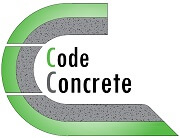
Mix Design Analysis Service
Mix design analysis is important in determining the code conformity of your concrete mixtures, their flaws, their optimization potential, and their theoretical quality.
Analysis of a concrete mixture mainly shows:
- A comparison between the mix proportions and the code requirements including:
- Cement content.
- Water content.
- Air content.
- Gradation requirements.
- etc…
- The requirements and limits in order to meet certain properties.
- Gradation quality of fine aggregates, coarse aggregates, the combination of aggregates, and the whole mixture.
- Flaws.
- Optimization potential.
- Carbon footprint.
- Binder intensity index.
- Cost analysis of your mix design.
- Performance analysis.
- And much more!
Why request a mix design analysis?
Generally, the analysis of a concrete mixture has numerous small and large scale benefits. In fact, when designing concrete mixtures or cement-based composites, various factors should be taken into consideration in addition to meeting the physical, mechanical, and durability properties. These factors include cost, environmental impact, overall performance, and others. This is especially important for large scale supply, as in most ready mix concrete plants.
For this reason, mix design analysis is crucial. To illustrate, a major benefit of this analysis procedure is finding the potential optimization parameters. For example, what if you can optimize a mixture in such a way to still meet the performance and code requirements, while reducing its cost or carbon footprint? What if you can enhance the durability of a concrete mixture without increasing its cost, or even reducing it? In fact, there are various parameters that can make a difference, and each mixture and large scale project requirements are different. Hence, finding the right balance between numerous factors is the key for successful mix designing.
Besides, mixture analysis mainly consists of two parts, theoretical and practical analysis. Here, the continuous monitoring and analysis of a mixture, theoretically and practically, can help establish relationships between various factors, and adjust easily based on the requirements.

